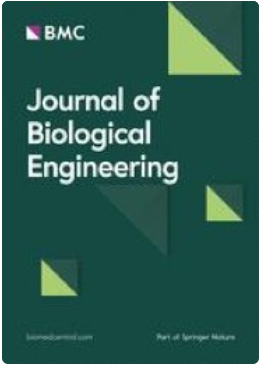Systematic comparison of nonviral gene delivery strategies for efficient co-expression of two transgenes in human mesenchymal stem cells
IF 5.7
3区 生物学
Q1 BIOCHEMICAL RESEARCH METHODS
引用次数: 0
Abstract
Human mesenchymal stem cells (hMSCs) are being researched for cell-based therapies due to a host of unique properties, however, genetic modification of hMSCs, accomplished through nonviral gene delivery, could greatly advance their therapeutic potential. Furthermore, expression of multiple transgenes in hMSCs could greatly advance their clinical significance for treatment of multifaceted diseases, as individual transgenes could be expressed that target separate pathogenic drivers of complex diseases. Expressing multiple transgenes can be accomplished by delivering multiple DNA vectors encoding for each transgene, or by delivering a single poly-cistronic vector that encodes for each transgene and accomplishes expression through either use of multiple promoters, an internal ribosome entry site (IRES), or a 2A peptide sequence. These different transgene expression strategies have been used to express multiple transgenes in various mammalian cells, however, they have not been fully evaluated in difficult-to-transfect primary cells, like hMSCs. This study systematically compared four transgene expression and delivery strategies for expression of two reporter transgenes in four donors of hMSCs from two tissue sources using lipid- and polymer-mediate transfection, as follows: (i) delivery of separate DNA vectors in separate nanoparticles; (ii) delivery of separate DNA vectors combined in the same nanoparticle; (iii) delivery of a bi-cistronic DNA vector with an IRES sequence via nanoparticles; and (iv) delivery of a bi-cistronic DNA vector with a dual 2A peptide sequence via nanoparticles. Our results indicate that expression of two transgenes in hMSCs, independent of expression or delivery strategy, is inefficient compared to expressing a single transgene. However, delivery of separate DNA vectors complexed in the same nanoparticle, or delivery of a bi-cistronic DNA vector with a dual 2A peptide sequence, significantly increased the number of hMSCs expressing both transgenes compared to other conditions tested. Separate DNA vectors delivered in the same nanoparticle and bi-cistronic DNA vectors with dual 2A peptide sequences are highly efficient at simultaneously expressing two transgenes in multiple donors of hMSCs from different tissue sources. The data presented in this work can guide the development of hMSC transfection systems for delivery of multiple transgenes, with the goal of producing clinically relevant, genetically modified hMSCs.系统比较在人类间充质干细胞中高效共表达两种转基因的非病毒基因递送策略
人类间充质干细胞(hMSCs)具有一系列独特的特性,目前正被研究用于基于细胞的疗法,然而,通过非病毒基因递送对 hMSCs 进行基因改造,可大大提高其治疗潜力。此外,在 hMSCs 中表达多个转基因可大大提高它们治疗多种疾病的临床意义,因为表达的单个转基因可针对复杂疾病的不同致病因素。表达多个转基因可以通过提供多个DNA载体来实现,这些载体可以编码每个转基因,也可以提供单个多聚体载体来实现,这些载体可以编码每个转基因,并通过使用多个启动子、内部核糖体进入位点(IRES)或2A肽序列来实现表达。这些不同的转基因表达策略已被用于在各种哺乳动物细胞中表达多个转基因,但它们尚未在难以转染的原代细胞(如 hMSCs)中得到全面评估。本研究系统地比较了以下四种转基因表达和递送策略,以在两种组织来源的四种供体 hMSCs 中使用脂质和聚合物介导转染法表达两种报告转基因:(i)在不同的纳米颗粒中递送不同的DNA载体;(ii)在同一纳米颗粒中递送不同的DNA载体;(iii)通过纳米颗粒递送带有IRES序列的双组分DNA载体;(iv)通过纳米颗粒递送带有双2A肽序列的双组分DNA载体。我们的研究结果表明,与表达单一转基因相比,在 hMSCs 中表达两个转基因(与表达或递送策略无关)的效率较低。然而,与其他测试条件相比,在同一纳米颗粒中复合递送单独的DNA载体,或递送带有双2A肽序列的双组分DNA载体,能显著增加表达两种转基因的hMSC数量。在同一纳米颗粒中分别递送的DNA载体和带有双2A肽序列的双组分DNA载体能高效地在来自不同组织来源的多个供体hMSCs中同时表达两种转基因。这项工作提供的数据可指导开发用于传递多个转基因的 hMSC 转染系统,从而生产出临床相关的转基因 hMSC。
本文章由计算机程序翻译,如有差异,请以英文原文为准。
求助全文
约1分钟内获得全文
求助全文
来源期刊

Journal of Biological Engineering
BIOCHEMICAL RESEARCH METHODS-BIOTECHNOLOGY & APPLIED MICROBIOLOGY
CiteScore
7.10
自引率
1.80%
发文量
32
审稿时长
17 weeks
期刊介绍:
Biological engineering is an emerging discipline that encompasses engineering theory and practice connected to and derived from the science of biology, just as mechanical engineering and electrical engineering are rooted in physics and chemical engineering in chemistry. Topical areas include, but are not limited to:
Synthetic biology and cellular design
Biomolecular, cellular and tissue engineering
Bioproduction and metabolic engineering
Biosensors
Ecological and environmental engineering
Biological engineering education and the biodesign process
As the official journal of the Institute of Biological Engineering, Journal of Biological Engineering provides a home for the continuum from biological information science, molecules and cells, product formation, wastes and remediation, and educational advances in curriculum content and pedagogy at the undergraduate and graduate-levels.
Manuscripts should explore commonalities with other fields of application by providing some discussion of the broader context of the work and how it connects to other areas within the field.
 求助内容:
求助内容: 应助结果提醒方式:
应助结果提醒方式:


